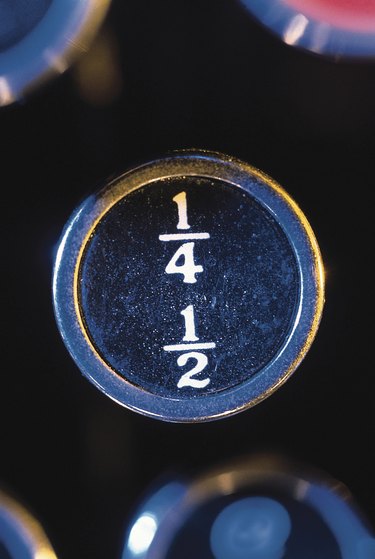
Fractions are a special case in Microsoft Excel, because they are rarely displayed properly. When you enter fractions, Excel converts them into an appropriate format, such as text, dates or decimals. To add fractions in Excel, you need to format the cells as fractions, so they are displayed and properly calculated. Excel allows several fraction types, such as halves or single-digit fractions. To accommodate most fractions, you should set up fractions to use up to three digits.
Step 1
Open Microsoft Excel.
Video of the Day
Step 2
Click and drag your mouse across the cells in which you wish to use fractions.
Step 3
Right-click any selected cell and select "Format Cells."
Step 4
Click "Fraction" from the Category list of the Number tab, select "Up to Three Digits (312/943)" from the Type section and click "OK."
Step 5
Enter your fractions in the formatted cells. As an example, you might enter "1/2" in cell A1 and "1/4" in cell A2.
Step 6
Enter "=SUM(range)" without quotes in an empty, fraction-formatted cell and replace "range" with the range of fraction you wish to add. In the example, you would enter "=SUM(A1:A2)" in cell A3. This calculates the sum as "3/4."
Video of the Day